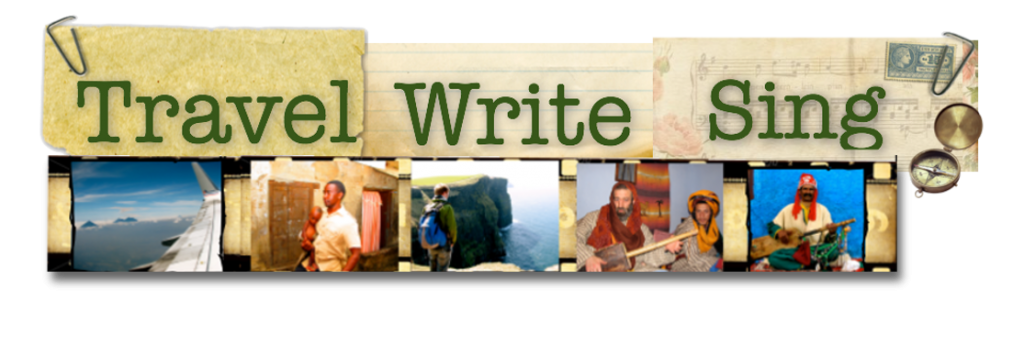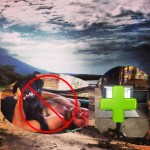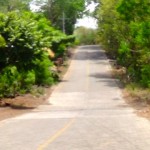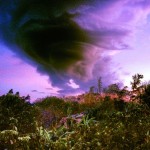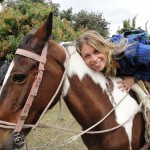I reminded myself to be present in a moment firstly, and to film a moment secondly. I was not here to write a story about Ometepe, I was writing a story about Ometepe because I was here.
Biking on The Island of Ometepe: Crappy Bikes + Crappy Roads = Flight
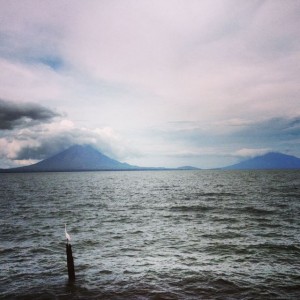 The Island of Ometepe in Nicaragua was formed when two volcanoes—Madera and Concepción—burst through the lake bottom to form one of the most scenic islands in the world. In 2010 UNESCO made Ometepe a Biosphere Reserve to protect this one-of-a-kind location.
The Island of Ometepe in Nicaragua was formed when two volcanoes—Madera and Concepción—burst through the lake bottom to form one of the most scenic islands in the world. In 2010 UNESCO made Ometepe a Biosphere Reserve to protect this one-of-a-kind location.
During my week on the island, I asked someone who’d done it on motorbike what he thought of bicycling around the Island of Ometepe’s Madera Volcano. I was told this notion was crazy. Not satisfied, I asked more people and one said it was reckless. Another that it was not possible I kept asking until someone told me that it would be very difficult, but not impossible.
There is 45km of road stretching around the extinct volcano of Madera. 45km may not seem so ambitious a bike ride, but these 45 kilometers of Ometepe’s road were carved by demons who beset the often-sloping roadway with loose volcanic boulders that caused my bike to throw me like an agitated horse.
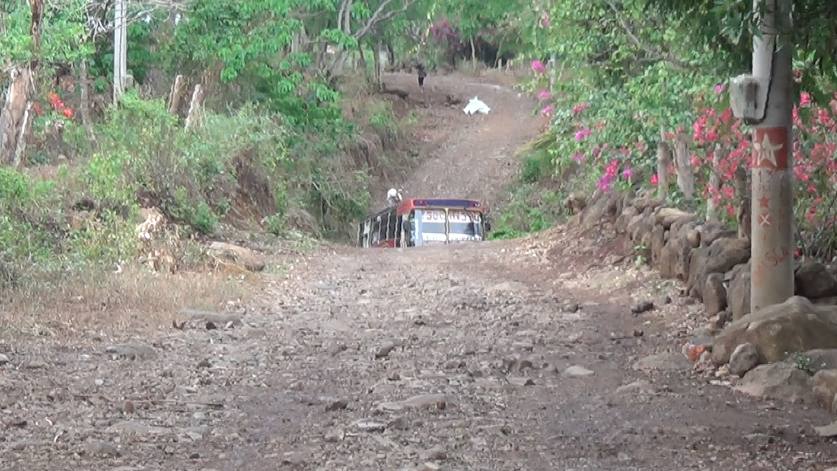
If the roads on the Island of Ometepe were from hell, then my bike was assembled by Satanic factory workers just back from a whiskey bender. Of the bike’s advertised 18 gears, 2 worked.
With the air buzzing and Ometepe basking in equatorial son, I crashed the bike right off the bat. Ride up up the first hill, the gears jammed, the chain separated, and the bike launched me over the handlebars onto the sun warm asphalt. Biking on my “Ometepe bike” would have me flying over the handlebars a lot that day.
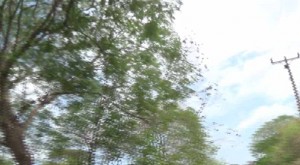
Biking on Ometepe With A Camera In Your Face
Not helping me not crash, I was pointing my video camera at myself. Occasionally, my Sony Handycam also flew and crashed, but somehow, continued to function.
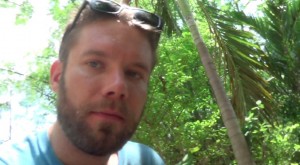 I enjoy pointing a camera at myself about as much as pointing a gun. But there is pressure in the world of travel writers and bloggers to do more than just write. Plenty of people would rather watch the video than read the, so I decided to give that a shake and in addition to make a short video about the experience.
I enjoy pointing a camera at myself about as much as pointing a gun. But there is pressure in the world of travel writers and bloggers to do more than just write. Plenty of people would rather watch the video than read the, so I decided to give that a shake and in addition to make a short video about the experience.
Despite the occasional crashing , the sun was warm and inviting. The road was flanked with mango trees. Biodiverse scents permeated the air. Green leaves and buzzing flowers the color of a hippie’s wardrobe dotted the ditches. The lake appeared frequently around the bends and whenever I desired a break from the dripping heat, I disembarked and took a swim in Lake Nicaragua.
Videotaping The Bike Ride on Ometepe: Something Gained, Something Lost

Oh Herro Cows!
Talking into the camera during the ride, the journey did not feel like a solo trip. It seemed like faceless friends behind the lens shared in my triumphs and tribulations. I talked to animals I met along the way and talked to them more than usual, which is a lot.
Life walks a fine line between ideals and our ability to fit them into the same vehicle that houses reality. I thought about the many travel bloggers pointing cameras at themselves all over the world that day. I reminded myself that my love of travel and writing had led me the life I had—and not the other way around. I reminded myself to be present in a moment firstly, and to film a moment secondly. I was not here to write a story about Ometepe, I was writing a story about Ometepe because I was here.
Ometepe’s Relentless Sun
After three hours of biking under a relentless sun, I stopped in a village and asked how much longer they thought before I’d arrive at where I’d set off. He thought I still had about three hours to go.
The road was like, the worst road ever—jagged and washed out, muddy and dangerous enough to keep me focused on the ride. The sun was how I loved it—splendidly scorching. The mangos were as they should be—everywhere and free for the taking. At one point a woman and her son came running out to me with three ripe mangos in her hands. “Here,” the woman said beaming, “these are for you.”
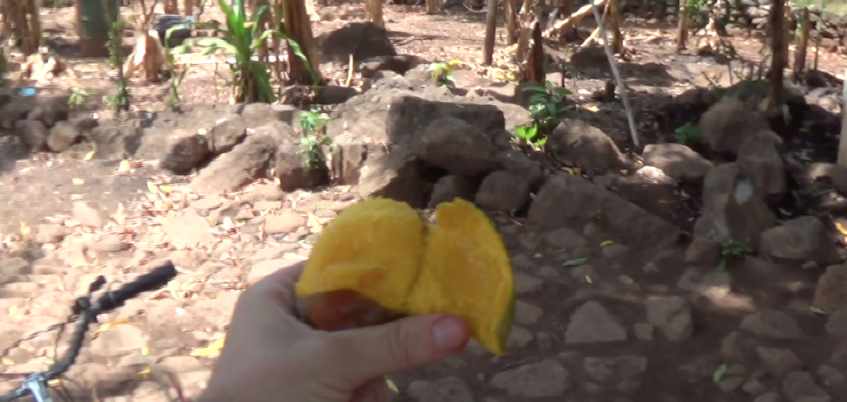
Two hours after being told that I had about three left, I asked again how many hours remained by bike and told again I had about three hours left. Now it was a race against nightfall.The roads somehow get even worse, civilization disappeared, water depleted and even the frequency of the mangos dwindled.
The Reluctant Swine of The Island of Ometepe
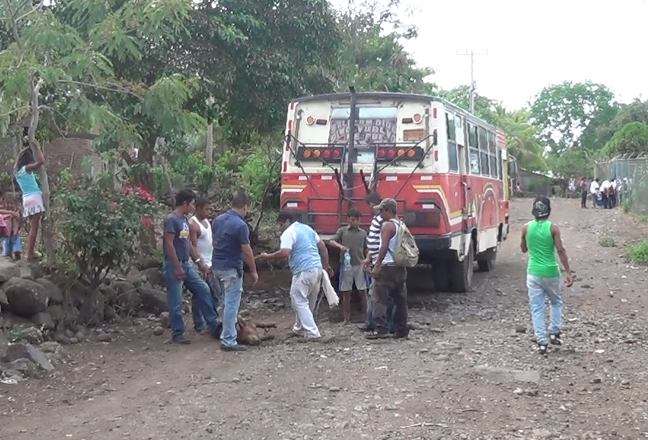
The lynching of the pig would not be a bad name to describe the scene. In witnessing it, two compassions fought for primacy. That one compassion shown to other cultures—accepting cultural differences with the realization that this was just how the cultural cookies had contextually crumbled. Then there is the compassion one feels for animals, and the hope that even the farm animals that end up on my plate enjoy their lives.
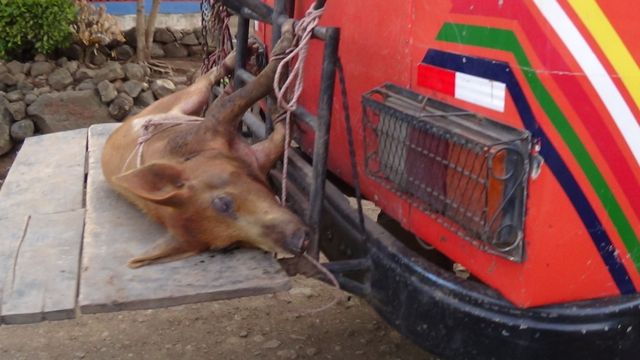
The screaming pig sounded like a choir composed singers of heavy metal bands—squealing highs that seemed to make every woe in the universe tangible in a singular song of unbridled lamentation.
I heard the pig scream long before I saw him and fully expected that around the bend I would see a pig being nailed to a cross. In the middle of the road five men had pinned a hog to the ground and were tying him up. It was as if I’d ridden to a medieval mobbing. The pig screamed and the men bound him tightly. The village had come out to watch, finding hilarity in the scene. It was not completely void of comedy, but neither was it a nice scene, and I recalled the similarities between humans and pigs.
The pig expressed its desire to not be tied as such by emitting a piercing squeal that it took a half dozen men to carry this tied hog to the back of a bus. Then the pig began to grunt in acceptance of his deplorable state of affairs. Then the bus and he drove away.
Going Kosher in Nicaragua
I was exhausted from seven hours of biking on difficult roads under a hot sun, I had no choice but to press my tired muscles onwards. With the sun setting, I arrived to Balgüe, a town before the Zopilote Lodge where I had a dorm bed. I saw the first joint serving food in Balgüe. I was starving and the menu was quite limited. I had the choice of two dishes—gallo pinto con huevos, or cerdo frito. Perhaps on another day I would have gone for the pork, but in that moment a beer with rice and beans seemed to a perfectly satisfying meal that would not conjure a pig’s piercing cry.
Finally fed, I finished the last Kilometer in darkness and returned my bike just as the rental place was shutting its doors.
Read my other Travel Nicaragua Posts:
1. Travel Nicaragua: Unrelenting Overnight Bus Hangovers
2. The Rum Infused Meanings in the Music on the Road
